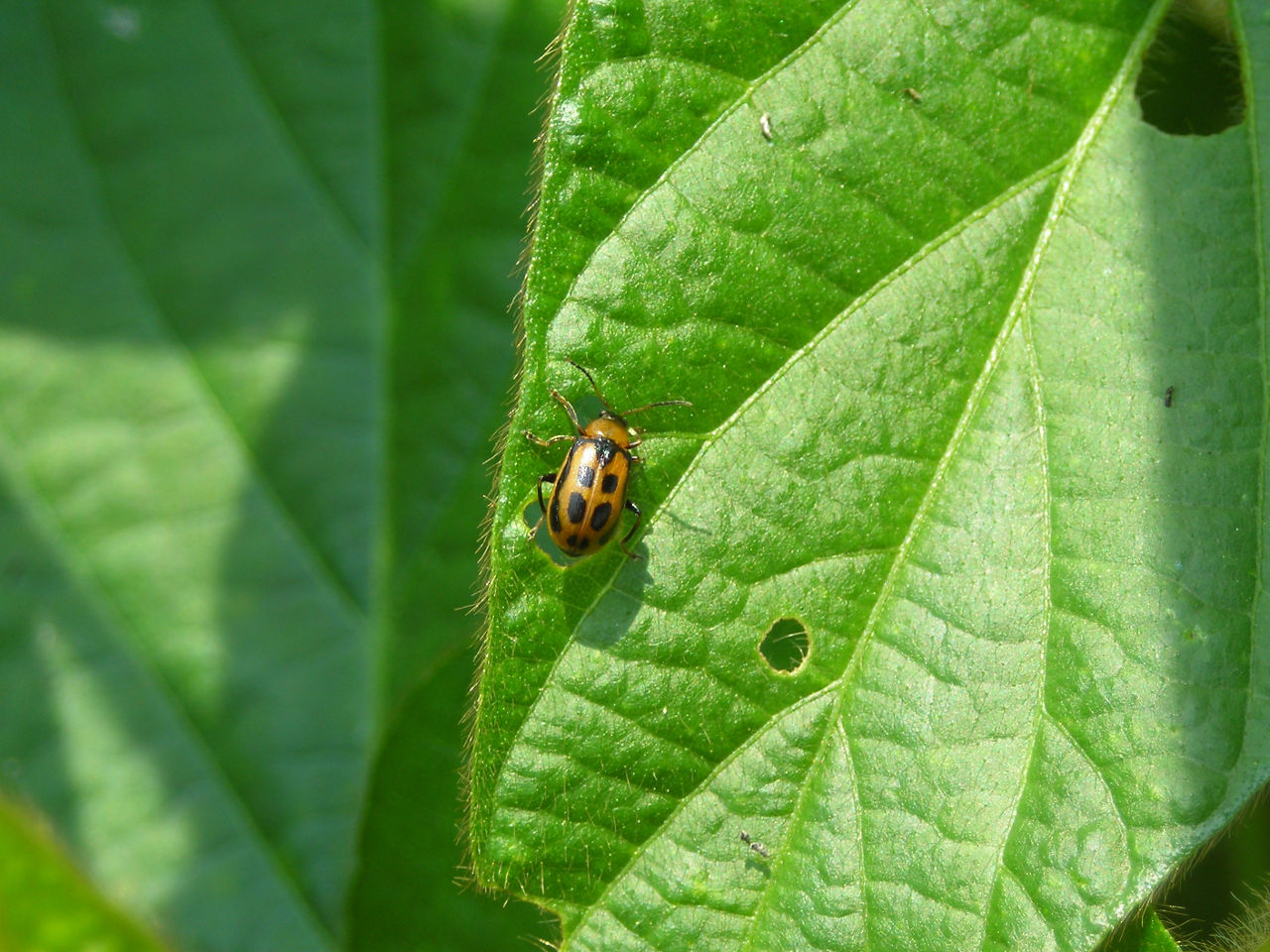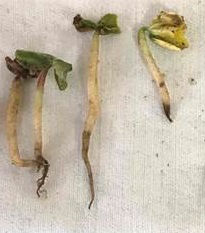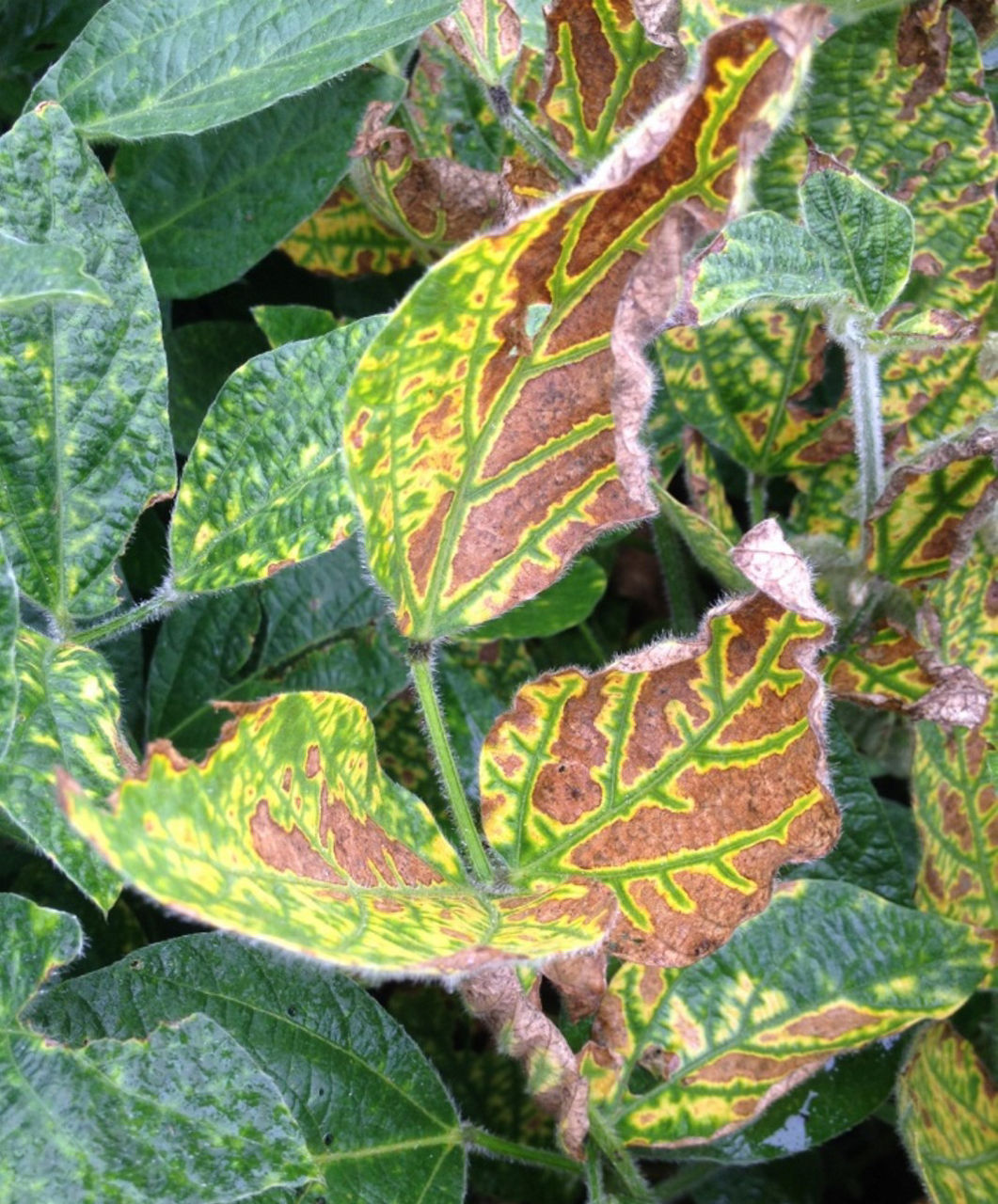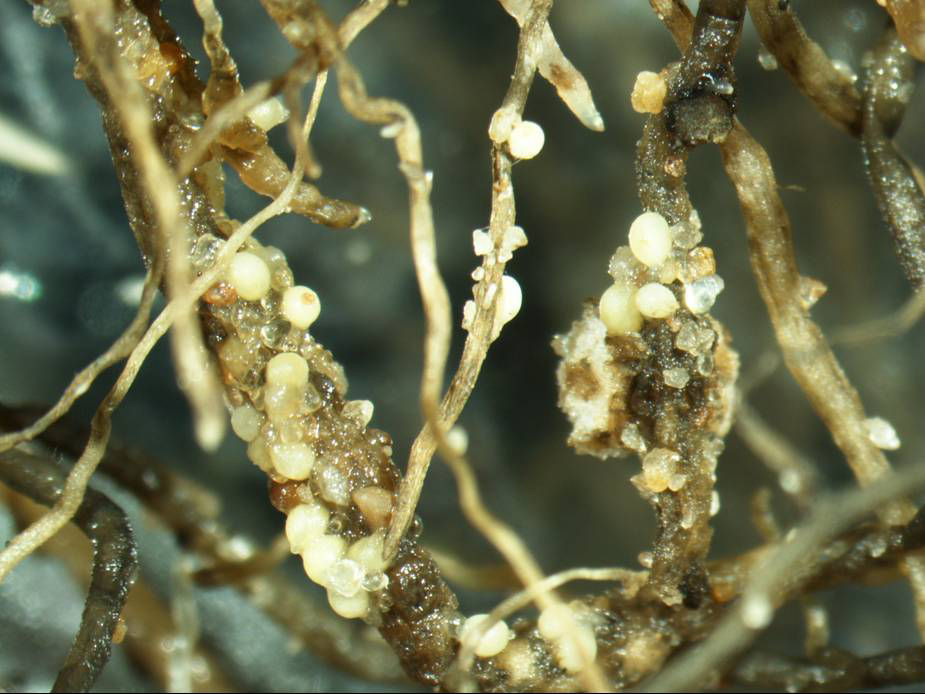8 MIN READ
Benefits and Risks of an Early Planted Soybean Crop
March 21, 2025
Early season pests. Cold soil temperatures can slow root development, making soybean stands more susceptible to overwintering bean leaf beetles (BLB) (Figure 1) and root-rotting seedling pathogens such as Phytophthora, Pythium, Rhizoctonia, and Fusarium.
Insecticide seed treatments can help provide protection against BLB. Monitor fields regularly for damage due to BLB. In addition to germplasm selection and good soil drainage, most fungicide seed treatments can help provide protection against diseases. Continue to scout fields for diseases such as frogeye leaf spot and white mold (Figure 2). A larger canopy earlier in the season can provide a favorable environment for diseases.

Early season pests. Cold soil temperatures can slow root development, making soybean stands more susceptible to overwintering bean leaf beetles (Figure 1) and pathogens such as Phytophthora, Fusarium, Pythium (Figure 2), or Rhizoctonia (Figure 3) that can cause damping off and seedling death.


Insecticide seed treatments can help provide protection against bean leaf beetle (BLB). Monitor fields regularly for damage due to BLB. In addition to germplasm selection and good soil drainage, most seed applied fungicide treatments can help provide protection against diseases. Continue to scout fields for diseases such as frogeye leaf spot and white mold (Figure 4). A larger canopy earlier in the season can provide a favorable environment for symptoms of these diseases to develop.

Sudden death syndrome (SDS) is a disease usually associated with cool and saturated soil conditions after planting, which are common early in the growing season. Selecting a soybean product with SDS tolerance may help reduce the risk of infection early in the season and development later (Figure 5). Soybean products that are resistant to soybean cyst nematodes (SCN, Figure 6) can also help, since the presence of SCN has been associated with increased SDS incidence.


Summary
Soybean yield potential is often affected by planting date. University research results have found that early planting can help maximize soybean yield potential. The potential yield benefits can be achieved by managing risks of early planting with the use of improved technologies and tools.
Sources
1 Specht, J. E., Rees, J. M., Zoubek, G. L. et al. 2012. Soybean planting date – when and why. University of Nebraska-Lincoln Extension. EC145. https://extensionpubs.unl.edu/publication/ec145/2012/pdf/view/ec145-2012.pdf
2 Staton, M. 2011. Planting soybeans early offers many benefits. Michigan State University Extension. https://www.canr.msu.edu/news/planting_soybeans_early_offers_many_benefits.
3 Licht, M. A., D. Wright, and A. W. Lenssen. 2013. Planting soybean for high yield in Iowa. Agriculture and Environment Extension Publications. https://dr.lib.iastate.edu/server/api/core/bitstreams/a6f5afe5-fa1b-426b-ada5-388019781807/content
4 Naeve, S. L. 2018. When and how to plant soybean. University of Minnesota. https://extension.umn.edu/soybean-planting/when-and-how-plant-soybean#:~:text=The%20standard%20University%20of%20Minnesota,their%20maturities%20until%20late%2DJune.
5 Kandel, H. and G. Endres. Revised 2023. Soybean production field guide for North Dakota. https://www.ag.ndsu.edu/publications/crops/soybean-production-field-guide-for-north-dakota#section-12.
6 Nafziger, E. 2020. Planting corn and soybeans in 2020. Farmdoc daily 10:67, Department of Agricultural and Consumer Economics, University of Illinois at Urbana-Champaign. https://farmdocdaily.illinois.edu/2020/04/planting-corn-and-soybeans-in-2020.html
7 Specht, J. 2010. Three reasons why soybean planting date matters. CropWatch. University of Nebraska-Lincoln. https://cropwatch.unl.edu/why-soybean-planting-date-matters.
8 Cerrudo, A. and Naeve, S. 2024. Risk management for early planted soybean. University of Minnesota Extension. https://blog-crop-news.extension.umn.edu/2024/04/risk-management-for-early-planted.html
Web sources verified 2/19/2025. 1314_108851